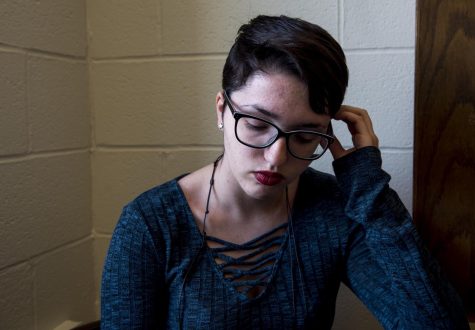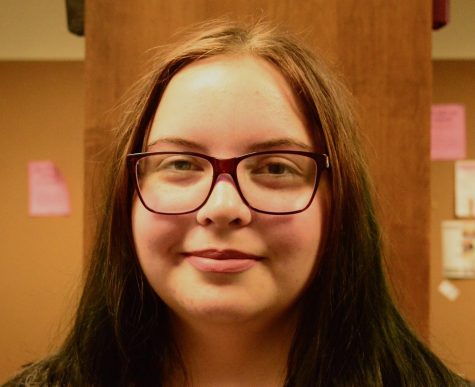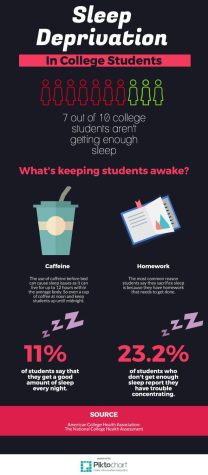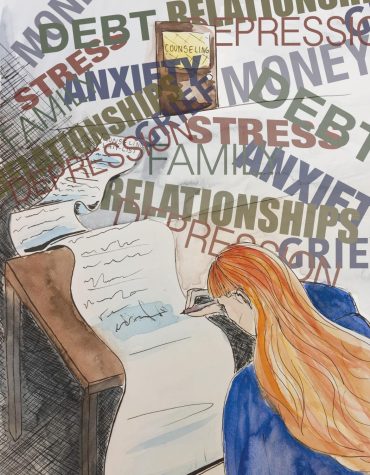How bigotry has created a mental health epidemic in the LGBTQ community
April 30, 2017
For some people, the mental health statistics of the LGBTQ community is a number they’ve heard in passing.
For others, it’s an ingrained fact within their lives.
LBGTQ Mental Health from KentWired.com on Vimeo.
The stigmas of mental health can keep people from being open about their mental illness, working to find the best treatment for themselves or even seeking care in the first place.
In the LGBTQ community, this stigma is increased.
Some look at the statistics and use them to further an agenda of queerness as a mental illness, while others recognize the high numbers of depression, anxiety and suicide as a symptom of a larger societal problem.
According to the 2015 U.S. Transgender Survey, 40 percent of trans people have attempted suicide at some point during their lives — a number nearly 10 times that of the general population.
Austin Johnson has a Ph. D in sociology from Kent State. His dissertation focuses on trans people’s experiences of healthcare inequality. A trans man himself, Johnson has spent nearly a decade studying trans people and their communities.
When it comes to trans healthcare, Johnson believes the problem is a lack of specialized education and resources.
“I think education is key,” he said. “Doctors aren’t trained in gender studies to know that everybody experiences gender differently, and that includes their gendered body.”
Johnson believes the “mental health epidemic” in the trans community is a symptom of a larger problem with the way cisgender society views trans people.
“It’s not necessarily that you’re trans, so therefore you are depressed,” he said. “It’s more about social reaction to trans identity causes depression and anxiety. Not trans identity causes depression and anxiety.”
Isolation can be a product of fearing rejection from peers and can be a cause of anxiety and depression.
In his research, Johnson looks at peer-to-peer support to form a better understanding of how trans people who are connected to other trans people within a community have lower rates of depression and anxiety.
“If you are here with all of these other people, it doesn’t feel so alone, right?” He explains. “You know you have someone who understands, you know you have someone who you can go to and social support is always a buffer against anxiety and depression and adverse mental health outcomes.”
The LGBTQ Student Center at Kent State opened in 2010 and has grown since. The center provides a welcoming space for LGBTQ students to meet up and hang out.
Ken Ditlevson, the center’s director, worked as a mental health counselor before returning to Kent State two years ago.
“I can tell you first-hand working at mental health agencies, overwhelmingly mental health providers are not equipped,” Ditlevson explains. “Training is not provided specific to the community.”
A report from the 2015 LGBT Health and Human Services Needs Assessment found that nearly a third of respondents “reported not enough LGBT-trained health professionals as a barrier to health care,” while 56 percent of transgender and gender nonconforming respondents reported it as “a significant barrier to health care.”
According to Ditlevson, mental health professionals are not required to participate in training on the specific problems that LGBTQ people face, such as discrimination, internalized hatred, lack of support and the coming out process.
Without such training, even well-meaning professionals often misgender trans patients, use their assigned names and refuse to house them with patients of their gender.
Many people avoid coming out for fear of discrimination or due to their own internalized homophobia and transphobia.
For Lana Kuhlenschmidt, a former Kent State nutrition major, suicidal thoughts and her own internal prejudice kept her from seeking care when she was younger.
“I really felt uncomfortable addressing my inner feelings,” she recalls. “I had a lot of internalized transphobia and homophobia.”
Kuhlenschmidt’s mother was a psychiatric nurse and she grew up with the Diagnostic and Statistical Manual of Mental Disorders (DSM) IV in reach. The text only helped to feed those negative beliefs.
“You read the DSM-IV and you get offended at it,” Kuhlenschmidt said. “It treats (being transgender) as a disorder.”
Until 1973, the DSM listed homosexuality as a mental disorder. The diagnosis — “gender identity disorder” — classified trans people as inherently mentally ill until 2013, when the fifth edition changed the label to “gender dysphoria,” a term which refers to the emotional distress sometimes associated with trans experience.
It’s easy to internalize this kind of hatred when people are exposed to it so often in society. From anti-gay rhetoric starting as early as with school children to transphobic jokes on “Saturday Night Live” and anti-LGBTQ laws debated in state legislatures, the hatred and misinformation are omnipresent.
For trans people, this misinformation leads to a constant concern of being called the wrong pronoun or name. Johnson compares these small aggressions to a student being repeatedly called the wrong name by a professor for a whole semester.
“That’s already annoying and disrespectful if a professor doesn’t know your name and calls you the wrong name,” he explains. “But if they’re doing it in a way to undermine your identity on purpose because they’re making a conscious choice to not identify you the way you want, not only is it annoying and exhausting, it’s disrespectful and it’s dehumanizing in a lot of ways.”
Johnson said these types of behaviors and the dysphoria of not being recognized as who you are can lead to depression and anxiety. Research shows that when you control for community connectedness and reduce chances of isolation, rates of depression, anxiety and suicide go down.
One such study, conducted in 2013, was published in the Journal of Consulting and Clinical Psychology. The focus of the study was “to examine facilitative and avoidant coping as mediators between distress and transition status, social support and loss.”
The study found social support had significant direct and indirect effects on participants mental health.
“The greater the social support one receives, the lower their depression,” the study reads.
This means that when LGBTQ people are in close relationships with each other and have a supportive environment — from friends, families or their community — they experience fewer adverse mental health problems.
Johnson believes in order to treat these mental health problems in these communities, we must also work to treat the underlying problem of hatred, prejudice and misinformation.
“If we don’t fix the issue that’s causing the problems — which, is not being trans, it’s society not liking trans people or having misconceptions about trans identity — then those problems are never going to go away,” he said. “We’re just treating symptoms of the underlying social causes of this mental health epidemic.”
Editor’s note: Ella is the managing editor and M.J. is the editor of Fusion, one of Kent State’s student magazines. See some of the magazine’s content here.
This story is part of a student media project entitled “The Silent Struggle.” See the whole project here.























